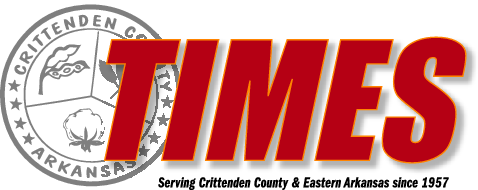Marathon tourism is booming
Why ‘race-cations’ are taking over bucket lists
By CAT XU
Wealth of Geeks
Marathons are no longer just about crossing the 26.2-mile mark near home. In recent years, a new trend has swept the running community: “Race-cations.”
What was once a niche hobby is now an international movement. Strava’s Year in Sport Trend Report reveals a 9 percent increase in marathon and ultra participation over the past year. Meanwhile, Running USA’s 2024 Global Runner Survey found that runners prioritize location as the top factor when choosing a race.
This trend, often dubbed “marathon tourism,” sees a growing number of runners turning their race calendars into travel itineraries at exotic locales.
“We need a goal; we need to feel alive, so we run,” explains Dutch psychologist, prolific ultramarathoner, and running coach Roel Spierings. “The combination with travel is more popular because we can afford it, it’s fun, and it gives us the feeling of pursuing a goal.”
The modern runner craves experiences beyond a finisher’s medal, seeking memories, personal transformations, and stories to tell long after the race is over.
The global boom in marathon tourism
Industry experts and survey data confirm that marathon tourism is here to stay. In 2024, the New York City Marathon set a new benchmark with over 55,000 finishers, surpassing previous records held by the Paris and Berlin Marathons earlier that year.
Three-quarters of respondents from Running USA’s survey plan to participate in the same number or more races in 2025.
Cities in Europe, Asia, and Africa are capitalizing on this craving for destination-based experiences, rolling out new events designed to attract runners and their travel companions.
Spierings attributes this explosion to a universal need to experience something bigger than ourselves. He points out, “We are at the top of the Maslow Pyramid. With technological advancements, we now spend more time sitting, do less physical work, and have excess energy. We need a goal.”
As work-life flexibility increases and health-conscious lifestyles gain ground, running in bucket list destinations suddenly fills a niche for those seeking purpose and excitement in their leisure time.
Economic impact of destination marathons
Destination marathons are no longer limited to just the “Big Six.” Familiar races like in London, Tokyo, or Boston bring in hundreds of millions of dollars in local spending each year. Yet, even smaller events around the world enjoy a dramatic surge in tourism around race days.
According to a Bank of America report on the Boston Marathon’s economic impacts in 2024, a staggering $509.1 million in economic activity was generated across Massachusetts. Many came from outside New England (51 percent) or abroad (30 percent).
Marathon participants also rarely travel alone. Surveys show that most runners arrive in groups of two or three, with 59 percent staying three to five nights. These extended stays highlight the marathon’s role as more than a one-day event, benefiting hotels, restaurants, and local attractions.
Why people travel for marathons
Barriers to entry lowered when the pandemic prompted a surge in outdoor, solo exercise, with many turning to running to stay active. Social-focused run clubs have popped up across the country, bringing runners together. At the same time, athletic companies have developed “super shoes” to help runners run faster with less energy expenditure.
Spierings has also discovered that extreme physical challenges hold immense psychological benefits, especially when coupled with the thrill of visiting new locales.
Running itself is a potent vehicle for self-discovery. Add an unfamiliar environment, such as mountainous terrain or desert heat, and the transformation often deepens.
Spierings’ own turning point came when he realized the untapped potential of the human body during his debut ultramarathon running the 80km Ecotrail in Paris. “It’s like riding your car, a.k.a. your body, every day and suddenly finding out you have 10 extra gears and 5 extra gas tanks.”
A seasoned ultramarathon traveler, Spierings now focuses on some of the most elite races in the world. He has already committed to four 155.3-mile races this year.
One of his most memorable experiences was a five-day, 250-km stage race through five Kenyan national parks. It’s a self-sufficient race where you’re literally running alongside wildlife,” he recalls. Another standout is the Eiger 250-km, which takes runners along a breathtaking UNESCO-protected route in Switzerland.
Beyond personal fulfillment, Spierings believes travel magnifies the psychological rewards. “You have to combine the suffering with the environment. The adventure makes you want to play the game.”
Doing the ‘impossible’: From couch to ultra finisher in 4 months
For the untrained, even a 3-mile run may seem impossible. However, with the right training and mindset, anything is possible.
Spierings’s pivot from military officer to coach led him to found Embodied Cognition, a company dedicated to harnessing a growth mindset through physical and mental improvement. He believes in “talking less, doing more” to truly understand one’s limits.
His newest initiative, Project Ultra, proves that “there is so much more possible than you think” by guiding committed but average individuals toward their first ultramarathon in just four months. Spierings keeps the ultramarathons he selects for his clients a secret until the big reveal, choosing either a 31mile or 62-mile race by the end of his program!
“The best part is, apart from the small lessons like committing or adopting a growth mindset, you get a trip to a country you’ve probably never been to. The whole adventure changes your life because it’s so out of the ordinary.” Spierings says. His coaching covers everything from nutrition and gear selection to mental resilience. “Nobody can do the miles for you. It’s a process you learn to love, just like life.”
“An ultramarathon is 10 years of life lessons in one race or day. It’s a great way to reflect and train the brain.” The mental transformations participants experience often outlast the physical toll, prompting them to return for more.
Finding balance between vacation and competition
Traveling for a marathon adds layers of logistics and potential pitfalls, like jet lag and climate shifts. Spierings recommends arriving a few days before the race to adjust to time zones and weather. The day before, take time to prep your gear. Sleep and eat well before the race, and avoid drastic dietary changes close to race day.
His best advice?” Drink a beer, and don’t change your whole routine. The work is done, last day changes aren’t going to do any good.”
These travel hurdles make the final achievement all the more rewarding. It’s all a part of the adventure. “That’s why it needs to be abroad; it needs to be rough, and you need people around you to share it with.”
Cat Xu / Wealth of Geeks

